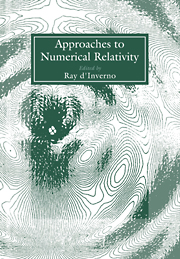Preface
Published online by Cambridge University Press: 15 December 2009
Summary
General relativity was for too long the ugly duckling of science. In the 50s and 60s the dominant impression was of the difficulty of the equations, solvable only by arcane techniques inapplicable elsewhere; of the scarcety of significant experimental tests; of the prohibitive cost of computational solutions, compounded by a lack of rigorous approximation techniques; and of the isolation of the subject from the physics of the other fundamental forces. This led to a situation where, even in the 70s, much theoretical work was becoming increasing irrelevant to physics. Exact solutions proliferated but (with the exception of cosmology) attempts at physical interpretation were few and unconvincing. Mathematical investigations in the wake of the singularity theorems became increasingly sophisticated, but few were applied to actual physical models. In the 70s and 80s, however, all this changed, with the growth of experimental relativity, the trend to geometrical methods in high energy physics, and the inception of numerical relativity. The workshop reported in this book marks the complete clearing of this last hurdle, as reliable and practical computational techniques are established.
It brought together numerical and classical relativists, and showed that the cultural gap between them was closing fast. Dramatically increased standards of reliability and accuracy had been set, and were being achieved in many cases, so that numerical work can no longer be seen merely as providing a rough indication for the ‘proper’ work of analysis.
- Type
- Chapter
- Information
- Approaches to Numerical Relativity , pp. xv - xxPublisher: Cambridge University PressPrint publication year: 1992

